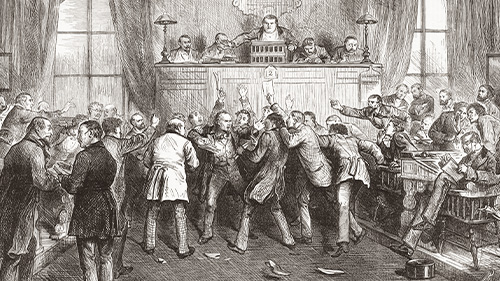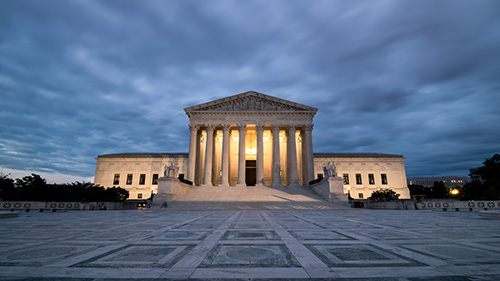APUSH Short Answer Questions: The RIDE Strategy Explained
One of the things that I spent most of my time thinking about, when the redesigned AP U.S. History course went into effect, was how to deal with the...
AP & Honors Mathematics
Explore Wiley titles to support both AP and Honors mathematics instruction.
Literacy Skills & Intensive Reading
Connections: Reading – Grades 6–12
Empower student success with a proven intensive reading program that develops strong reading skills in striving readers.
Drama, Speech & Debate
Basic Drama Projects 10th Edition
Build students’ confidence and competence with comprehensive, project-based theatre instruction.
Literature
Connections: Literature
Support learners as they study dynamic, relevant texts and bring the richness of diverse voices to students through literature.
Literature & Thought
Develop critical thinking, reading, and writing across literacy themes, genres, historical eras, and current events.
Language Arts
Vocabu-Lit® – Grades 6–12
Help students build word power using high-quality contemporary and classic literature, nonfiction, essays, and more.
Connections: Writing & Language
Help students develop grammar, usage, mechanics, vocabulary, spelling, and writing and editing skills.
Reading/English Language Arts
Measuring Up to the English Language Arts Standards
Incorporate standards-driven teaching strategies to complement your ELA curriculum.
English Language Learners
Measuring Up for English Language Learners
Incorporate research-based best practices for ELLs with an approach that includes a focus on language acquisition strategies.
Mathematics
Measuring Up to the Mathematics Standards
Incorporate standards-driven teaching strategies to complement your mathematics curriculum.
Foundations
Measuring Up Foundations
Help students master foundational math skills that are critical for students to find academic success.
Science
Measuring Up to the Next Generation Science Standards
Give students comprehensive NGSS coverage while targeting instruction and providing rigorous standards practice.
Assessment
Measuring Up Live
Deliver innovative assessment and practice technology designed to offer data-driven instructional support.
For a better website experience, please confirm you are in:

The Long Essay Question (LEQ) on the AP U.S. History exam offers students an opportunity to construct a sophisticated historical argument, supported by evidence and contextualized within a broader historical narrative. Effectively teaching this component requires a structured approach that emphasizes analytical thinking, evidence-based reasoning, and nuanced understanding.
The 2024 prompt reads:
Evaluate the relative importance of the effects of movements for social change from 1945 to 1980.
As a model, we can explore effective strategies for preparing students to take on the LEQ.
The LEQ, as exemplified by the 1945-1980 social change prompt, requires students to craft a thesis that establishes a line of reasoning, describes broader historical context, supports their argument with relevant evidence, and employs historical reasoning skills. In this case, students must evaluate the relative importance of the effects of movements for social change within a specific time frame. This requires identifying multiple effects and ranking them based on their significance, rather than simply listing them—this idea of ranking effects will ensure that the thesis is an arguable claim.
Teachers should guide students to develop a clear, argumentative thesis that directly addresses the prompt. For the 1945-1980 question, a strong thesis might state, "While the Civil Rights Movement's legal and social transformations significantly reshaped American society, the feminist movement's impact on gender roles and economic opportunities ultimately proved more far-reaching, fundamentally altering the nation's cultural landscape." This thesis establishes a clear line of reasoning by identifying two key movements and ranking their effects in terms of relative importance with a clearly defined rationale.
Next, students must describe a broader historical context relevant to the prompt. Teachers should emphasize that context is not merely background information; it is the setting that shapes the argument. For the 1945-1980 period, students could discuss the context of the Cold War, post-World War II life in America, the rise of consumer culture, or the burgeoning youth movement. This context provides a framework for understanding the social changes of the era. Teachers can encourage students to create a contextualization paragraph that demonstrates how these broader forces influenced the movements and their effects. In essence, asking students what the major trends in the period are is a helpful way for students to build their historical context.
The heart of the LEQ is supporting an argument with specific and relevant evidence. Teachers should teach students to use evidence strategically, selecting examples that directly support their thesis. For the 1945-1980 prompt, evidence might include landmark legislation like the Civil Rights Act of 1964 or Title IX, court cases like Roe v. Wade, or cultural shifts like the rise of second-wave feminism. Students should be taught to explain the significance of each piece of evidence and connect it back to their thesis, demonstrating how it supports their argument about relative importance.
Employing historical reasoning is another critical component of the LEQ. Teachers should guide students to use comparison, causation, or continuity and change over time to structure their argument. For the 1945-1980 prompt, students could compare the long-term effects of the Civil Rights Movement and the feminist movement, or analyze the relationships between these movements and broader societal changes.
Finally, students must demonstrate a complex understanding of the historical development related to the prompt. This can be achieved through sophisticated argumentation or effective use of evidence. Teachers can teach students to acknowledge counterarguments, explore multiple perspectives, or analyze the nuances of historical causation. For example, students could discuss the limitations of the Civil Rights Movement or the backlash against feminist gains, demonstrating a nuanced understanding of the era's complexities. For example, conservative backlash to the introduction of the Equal Rights Amendment (ERA) or the creation of the Moral Majority would be an example of the backlash to the gains of liberal social movements of the time.

One of the things that I spent most of my time thinking about, when the redesigned AP U.S. History course went into effect, was how to deal with the...

You may have heard about the “Irish” Thesis Formula—it is all over the internet. Some teachers like it, others hate it, but whatever you think about...

Do you need ideas or extra support helping students review for the AP® United States History Exam? Join me as I share my content review resources and...

Early in a school year it can be a real challenge to know how to begin teaching students critical skills they need to score on the AP® U.S. History...

From a practical point of view, argumentation is at the heart of the free response section of the AP exam. This can be particularly difficult with...

Join AP experts Brandon Abdon, Colin Baker, and Bob Topping to discover scaffolded approaches to teaching the APUSH, AP Euro, and AP World History...

One of the personal stories I frequently share with my students is how I nearly became a lawyer. I majored in political science and philosophy in...

Experienced AP World History teacher Dave Drzonek and AP World History Exam table leader Charlie Hart discuss what students did well and what they...

Unlock the power of historical thinking and writing as you elevate complexity and engagement in AP History classrooms. Presented by experienced AP...

Many teachers consider the Document Based Question (DBQ) of the AP® European History Exam to be one of the more challenging aspects of the course....

This blog entry is designed to provide some hints to help your students improve their writing on the free-response section of the exam. The...

Let’s face it, poorly answered free response questions are hard on both teachers and students. Most students shudder at the thought of answering the...
